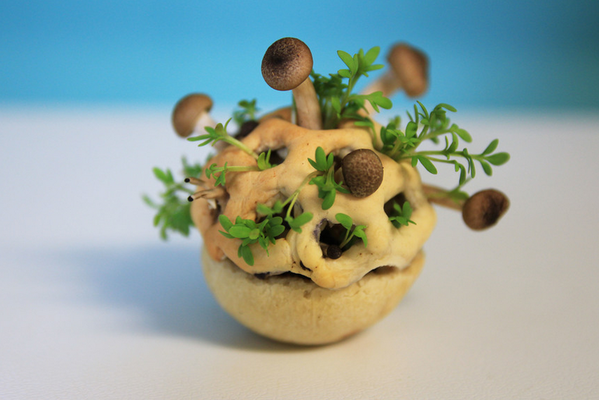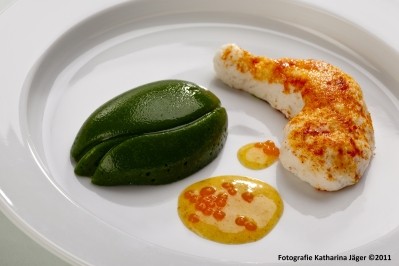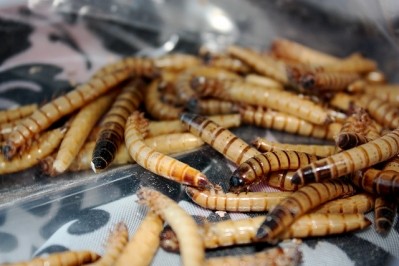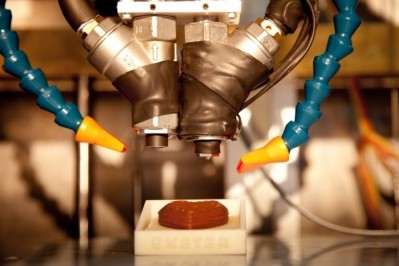‘Snack to the future!’ 3D printing concept promises ‘fully edible ecosystem’, including the soil…

Freelance food and concept designer Chloé Rutzerveld recently graduated from Eindhoven University of Technology with a degree in Industrial Design, and has made headlines around the world in recent months, for her 2014 3D food printing project Edible Growth.
Using this technology she has created the concept for a snack product comprising multiple layers – with an outer shell of dough or pasta and spores, seeds, yeast and ‘edible soil’ on the inside.
‘Future food concept’ seeks to inspire scientists, designers, cooks
Rutzerveld describes this “future food concept” as a fully edible ecosystem created with living organisms, where the base of the snack is printed by a 3D printer and gradually develops into a finished dish.
Her concept involves printing the food’s layers are printed using a bespoke 3D file; within five days the plants and fungi mature and the yeast ferments – turning the solids inside the snack into liquid.
“After the product has been printed, the consumer takes it home, and within three to five days it will develop towards a complete dish that contains all the nutrients the body needs,” Rutzerveld says.
“Just like Rochefort cheese, the intensity of its taste, smell and the whole eating experience increases over time.” Depending on their preference, the consumer can decide when to eat the snack.
Producing food in this way would enable us to shrink food supply chains, Rutzerveld says, by reducing food waste, food miles and CO2 emissions; meanwhile, the consumer will become more involved and conscious about the food they eat.
For now, the Edible Growth concept remains precisely that, a concept that has yet to be produced.
Aside from advances that need to be made in 3D printing software and hardware, Rutzerveld says extensive biotechnological research is necessary on ingredient composition and food safety.
3D printed food with real added value
For now though, she wants to inspire scientists, designers and cooks to think about the future of our food.
“I want to show that high-tech food or lab-produced food does not have to be unhealthy, unnatural and not tasteful,” Rutzerveld says on her website, where more details of her project are available.
“Edible growth is an example of high tech but fully natural, healthy and sustainable food made possible by combing aspects of nature, science, technology and design,” she adds.
“The printer is not only used as a kind of shaping machine in which material A gets in and also comes out in another shape, but it is used to create innovative food that truly contributes to solving the world’s food problems.”
Until now, Rutzerveld says, companies have only succeeded in using 3D printing to print sugar sculptures, chocolates and other unhealthy sweets, “transforming product A into product A in a different shape”.
“The products that are made cannot be called ‘food’ and other than the aesthetic aspects, they have no additional value or necessity to be printed,” she writes on her site.
![Biozoon currently targets care home residents. “But I definitely can imagine that in the future such [3D printing options] options will become ‘normal’," says Forstner. © iStock/Monkeybusinessimages](/var/wrbm_gb_food_pharma/storage/images/_aliases/wrbm_medium/5/9/4/2/2002495-1-eng-GB/Biozoon-s-3D-printed-smooth-foods-target-Europe-s-elderly.jpg)



















